|

南开校友及各界朋友信息交流网站 |
|
张文君教授
张文君先生,上海人。 1961年毕业于南开大学外文系。 曾在我们班短期任教,后因家庭原因调到北京语言大学。
|
English Poet George Gordon Byron (1788-1824) |
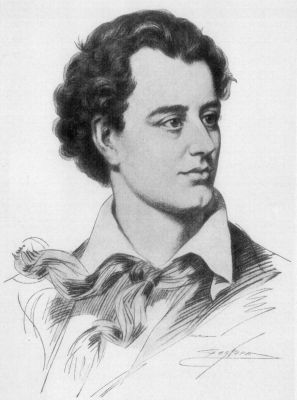
Lord Byron
(This work of art is in the public domain.) |
George Gordon Byron, later Noel, 6th Baron Byron (1788– 1824) was a British poet and a leading figure in Romanticism. Amongst Byron's best-known works are the brief poems She Walks in Beauty, When We Two Parted, and So, we'll go no more a roving, in addition to the narrative poems Childe Harold's Pilgrimage and Don Juan. He is regarded as one of the greatest European poets and remains widely read and influential, both in the English-speaking world and beyond.
Byron's fame rests not only on his writings but also on his life, which featured upper-class living, numerous love affairs, debts, and separation. He was famously described by Lady Caroline Lamb as "mad, bad, and dangerous to know". Byron served as a regional leader of Italy's revolutionary organization, the Carbonari, in its struggle against Austria. He later travelled to fight against the Ottoman Empire in the Greek War of Independence, for which Greeks revere him as a national hero. He died from a fever contracted while in Messolonghi in Greece.
Byron eventually took his seat in the House of Lords in 1811, shortly after his return from the Levant, and made his maiden speech there on 27 February 1812. A strong advocate of social reform, he received particular praise as one of the few Parliamentary defenders of the Luddites: specifically, he was against a death penalty for Luddite "frame breakers" in Nottinghamshire, who destroyed textile machines that were putting them out of work. His first speech before the Lords was loaded with sarcastic references to the "benefits" of automation, which he saw as producing inferior material as well as putting people out of work. He said later that he "spoke very violent sentences with a sort of modest impudence," and thought he came across as "a bit theatrical". In another Parliamentary speech he expressed opposition to the established religion because it was unfair to people of other faiths. These experiences inspired Byron to write political poems such as Song for the Luddites (1816) and The Landlords' Interest, Canto XIV of The Age of Bronze. Examples of poems in which he attacked his political opponents include Wellington: The Best of the Cut-Throats (1819); and The Intellectual Eunuch Castlereagh (1818).
|
|
| |
She walks in beauty like the night
of cloudless climes and starry skies;
And all that's best of dark and bright
meets in her aspect and her eyes:
Thus mellow'd to that tender light
which heaven to gaudy day denies.
One shade the more, one ray the less,
had half impair'd the nameless grace
which waves in every raven tress,
or softly lightens o'er her face -
where thoughts serenely sweet express
how pure, how dear their dwelling - place.
And on that cheek, and o'er that brow,
so soft, so calm, yet eloquent,
the smiles that win, the tints that glow,
but tells in days of goodness spent,
a mind at peace with all below,
a heart whose love is innocent.
|
|
|
When We Two Parted
by Lord Byron
|
|
|
| |
When we two parted
In silence and tears,
Half broken-hearted
To sever for years,
Pale grew thy cheek and cold,
Colder thy kiss;
Truly that hour foretold
Sorrow to this.
The dew of the morning
Sank chill on my brow -
It felt like the warning
Of what I feel now.
Thy vows are all broken,
And light is thy fame:
I hear thy name spoken,
And share in its shame.
They name thee before me,
A knell in mine ear;
A shudder come o'er me -
Why wert thou so dear?
They know not I knew thee,
Who knew thee too well: -
Long, long shall I rue thee,
Too deeply to tell.
In secret we met -
In silence I grieve,
That thy heart could forget,
Thy spirit deceive.
If I should meet thee
After long years,
How should I greet thee? -
With silence and tears.
|
|
|
So We'll Go No More a-Roving
by Lord Byron
|
|
|
| |
So we'll go no more a-roving
So late into the night,
Though the heart still be as loving,
And the moon still be as bright.
For the sword outwears its sheath,
And the soul outwears the breast,
And the heart must pause to breathe,
And love itself have rest.
Though the night was made for loving,
And the day returns too soon,
Yet we'll go no more a-roving
By the light of the moon.
|
|
|
|
Adieu, Adieu! My Native Land
by Lord Byron
|
|
|
| |
Adieu, adieu! my native shore
Fades o'ver the waters blue;
The night-winds sigh, the breakers roar,
And shrieks the wild sea-mew.
Yon sun that sets upon the sea
We follow in his flight;
Farewell awhile to him and thee,
My native Land-Good Night!
A few short hours, and he will rise
To give the morrow birth;
And I shall hail the main and skies,
But not my mother earth.
Deserted is my own good hall,
Its hearth is desolate;
Wild weeds are gathering on the wall;
My dog howls at the gate.
|
|
|
|
'All Is Vanity,' Saith the Preacher
by Lord Byron
|
|
|
Fame, wisdom, love, and power were mine,
And health and youth possessed me;
My goblets blushed from every vine,
And lovely forms caressed me;
I sunned my heart in beauty’ eyes,
And felt my soul grow tender;
All earth can give, or mortal prize,
Was mine of regal splendour.
I strive to number o’er what days
Remembrance can discover,
Which all that life or earth displays
Would lure me to live over.
There rose no day, there rolled no hour
Of pleasure unembittered;
And not a trapping decked my power
That galled not while it glittered.
The serpent of the field, by art
And spells, is won from harming;
But that which soils around the heart,
Oh! who hath power of charming?
It will not list to wisdom’s lore,
Nor music’s voice can lure it;
But there it stings for evermore
The soul that must endure it. |
|
|
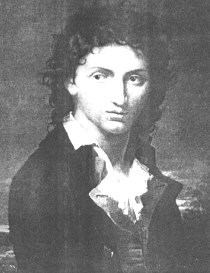
Byron in 1803
(This work of art is in the public domain.)
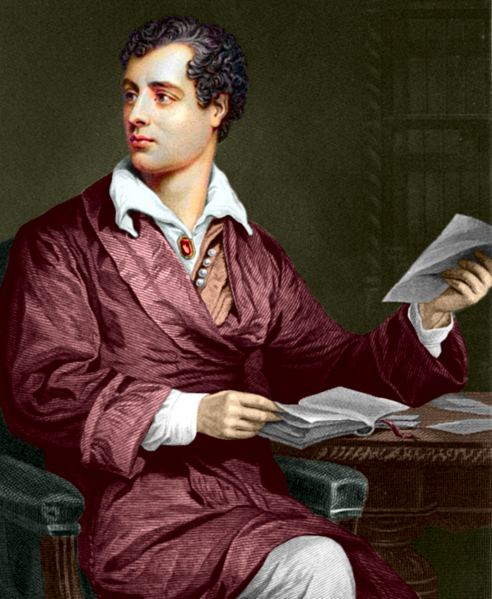
Lord Byron
(This work of art is in the public domain.)
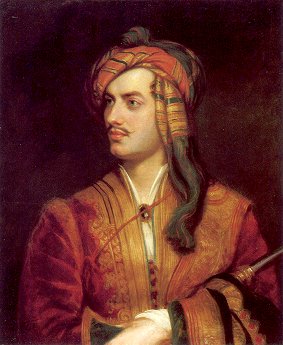
Byron in Albanian Dress
(This work of art is in the public domain.)
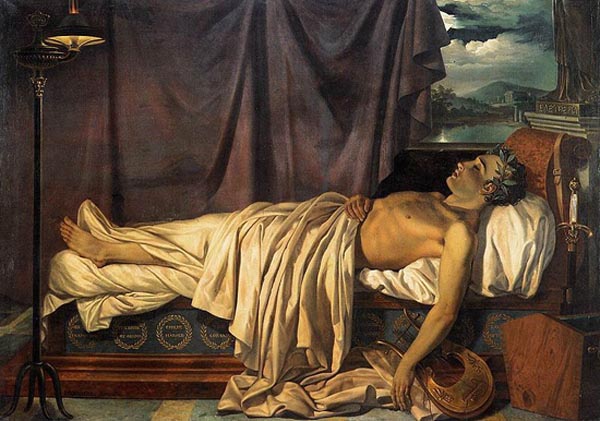
Lord Byron on his deathbed as depicted by Joseph-Denis Odevaere c.1826.
. Note the sheet covering his misshapen right foot. (This work of art is in public domain.)
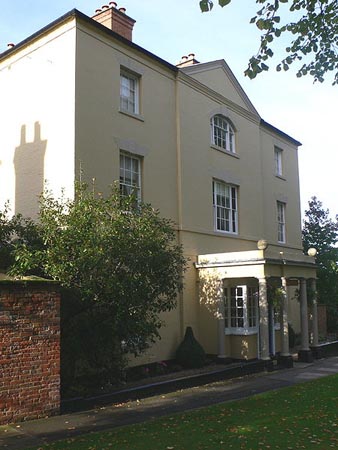
Byron's house in Southwell, Nottinghamshire, England
(This photo is reused under the term of GNU Free Documentation Lisence.)
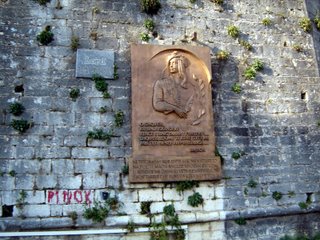
The Byron's Stone in Tepelene, Albania
(This work is re-used under the Creative Commons Attribution 3.0 License.)
 
|
|

